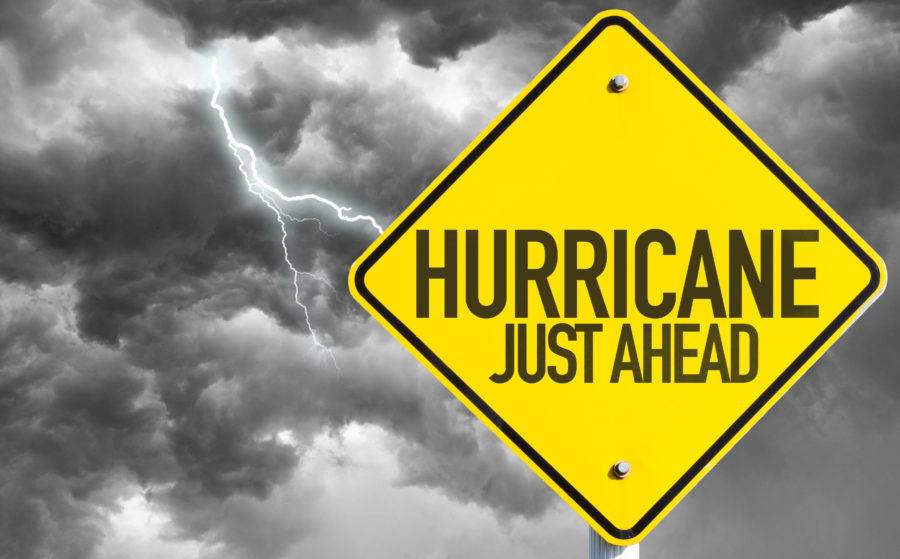The 2018 Atlantic hurricane season is expected to feature a near-average number of hurricanes and tropical storms, according to an updated seasonal outlook released by The Weather Company, an IBM Business.
The Weather Company expects 12 named storms during the season, including five hurricanes and two major hurricanes of Category 3 or higher intensity.
This is slightly less activity compared to the April outlook, which called for 13 named storms and six hurricanes this hurricane season.
The updated forecast is near the Atlantic Basin’s 30-year historical average (1981-2010) of 12 named storms, six hurricanes and three major hurricanes and slightly less than the Colorado State University outlook released earlier this month.
There are several reasons forecasters are calling for these near-average numbers in 2018:
- Atlantic Ocean Temperature Patterns
A pattern of cooler-than-average water temperatures has developed in the eastern Atlantic and in the central northern Atlantic.
The Weather Company compared sea-surface temperature anomalies in April for inactive vs. active hurricane seasons and found that the current pattern more closely represents inactive hurricane seasons.
Temperatures in the space between the Lesser Antilles and Africa are supportive for tropical growth nearly year-round, but the warmer the water in that region, the more likely a tropical cyclone is to develop, all other factors (wind shear, atmospheric moisture, forward speed, etc.) held constant.
Should this pattern of cooler-than-average ocean temperatures continue into the heart of hurricane season (August, September and October), we can expect less tropical activity west of Africa.
The Gulf of Mexico has warmed to near or even slightly above average since the last update in April.
2. Transition Toward El Niño?
Waters in the eastern equatorial Pacific Ocean have warmed to near-average, a sign of neutral conditions. Neither La Niña nor El Niño conditions are present as of mid-May.
The latest outlook from the Climate Prediction Center, released May 10, forecasts neutral conditions to last through the end of hurricane season before El Niño conditions potentially take over this winter. As we have seen so far in 2018, a gentle warming of the equatorial Pacific is anticipated through the end of the year.
The atmospheric component of this global atmospheric and oceanic phenomena is, so far, following right along with the oceanic portion of El Niño, according to The Weather Company’s outlook.
The average tropical activity of these similar years was a near-average hurricane season.
How quickly waters warm in the equatorial Pacific Ocean is still a big question going into the upcoming hurricane season. A faster warming of the Pacific, or a quicker transition toward El Niño, could mean fewer storms and hurricanes, especially toward the end of hurricane season.
3. Increasing North Atlantic Oscillation
The North Atlantic Oscillation (NAO), defined as a pattern of pressure gradients over the northern Atlantic Ocean, is expected to remain positive through the rest of the spring.
Both the Azores-Bermuda high-pressure system and the Greenland low-pressure system are strengthened in the positive phase of the NAO. This creates a stronger pressure gradient and increased wind between the two systems. This also creates more wind around the Azores-Bermuda high.
In the winter, this means a quicker storm track for winter storms crossing the northern Atlantic, but in hurricane season, it may bring a few less-than-favorable conditions:
- Gustier winds across much of the subtropics and North Atlantic.
- Cooler water temperatures.
- A slightly faster tropical wave track across the Atlantic.
The positive phase of the NAO decreases the chances of an active year.
4. The Multi-Decade Long Upward Swing in the Tropics Might Be Over
The tropics have long-period upward and downward swings in activity called the Atlantic Multidecadal Oscillation (AMO).
The current period of increased activity began in 1995 and has been responsible for monster seasons like 2004, 2005 and 2010. Prior to that, from 1965 through 1994, far fewer Atlantic hurricanes were produced each year.
The periods of increased and decreased activity last 20 to 40 years each and are a result of changes in the system of oceanic currents in the northern Atlantic Ocean.
The AMO is the climate background that all other climate and weather patterns build on in the Atlantic, including El Niño.
If we are beginning to see the end of the active phase of the AMO, the number of hurricanes will be generally near or below average for the next two or more decades.
Years in a low-activity AMO period with a strong El Niño are usually far-below-average seasons. Two such seasons are 1982 and 1987, which both had fewer than seven named storms.
Hurricane season runs from June 1 through Nov. 30 in the Atlantic Basin. For more information and updates visit weather.bm
This article was featured in week one of the 2018 Hurricane Survival supplement.

